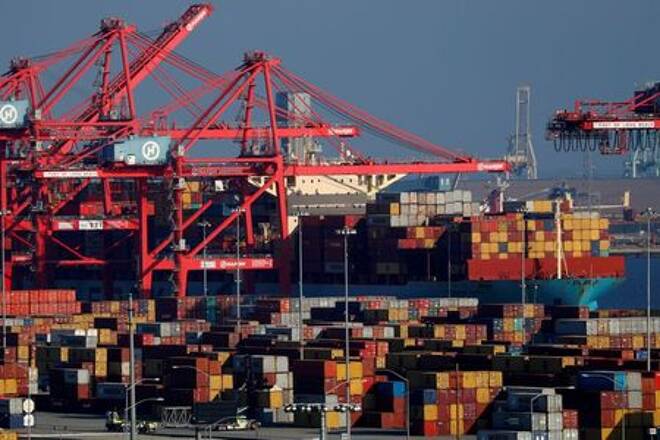Advertisement
Advertisement
U.S. Trade Deficit Hits Record High in February
By:
WASHINGTON (Reuters) -The U.S. trade deficit surged to a record high in February as the nation's economic activity rebounded more quickly than that of its global rivals and could remain elevated this year, with massive fiscal stimulus expected to spur the fastest growth in nearly four decades.
By Lucia Mutikani
The economy is roaring as increased COVID-19 vaccinations and the White House’s $1.9 trillion pandemic rescue package boost domestic demand, a chunk of which is being satiated with imports. The aggressive government intervention and the Federal Reserve’s ultra-easy monetary policy have charted a robust growth path for the economy.
The trade deficit jumped 4.8% to a record $71.1 billion in February, the Commerce Department said on Wednesday. Economists polled by Reuters had forecast a $70.5 billion deficit. The goods trade gap was also the highest on record.
Imports slipped 0.7% to $258.3 billion. Goods imports fell 0.9% to $219.1 billion. The drop likely reflected supply-chain constraints, rather than weak domestic demand. Indeed, imports of capital goods hit a record high, while those of industrial supplies and materials were the highest since October 2018.
“Cargo ships have been forced to anchor outside the Los Angeles and Long Beach ports, where about a third of goods imports come through, as the ports struggle to unload the incoming ships,” said Jay Bryson, chief economist at Wells Fargo Securities in Charlotte, North Carolina.
The United States in February recorded its first petroleum deficit since December 2019, likely because of higher crude prices.
Exports dropped 2.6% to $187.3 billion. Exports of goods tumbled 3.5% to $131.1 billion, likely hurt by unseasonably cold weather across large parts of the country.
When adjusted for inflation, the goods trade deficit shot up to a record $99.1 billion in February from $96.1 billion in January. The so-called real trade deficit is running well above the average for the October-December period.
That suggests trade could subtract from GDP growth in the first quarter, which would be the third straight quarterly drag. But that is unlikely to have an impact on first-quarter GDP growth estimates, currently as high as a 10% annualized rate. The economy grew at a 4.3% pace in the fourth quarter.
Economists expect growth this year could top 7%, which would be the fastest since 1984. The economy contracted 3.5% in 2020, the worst performance in 74 years. The International Monetary Fund is forecasting the global economy to expand 6% this year, driven primarily by the U.S. economy, which the fund estimated would grow by 6.4%.
From the labor market to manufacturing and the hard-hit services industries, activity accelerated sharply in March.
(Reporting by Lucia MutikaniEditing by David Goodman and Paul Simao)
About the Author
Reuterscontributor
Reuters, the news and media division of Thomson Reuters, is the world’s largest international multimedia news provider reaching more than one billion people every day. Reuters provides trusted business, financial, national, and international news to professionals via Thomson Reuters desktops, the world's media organizations, and directly to consumers at Reuters.com and via Reuters TV. Learn more about Thomson Reuters products:
Advertisement
